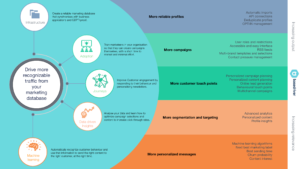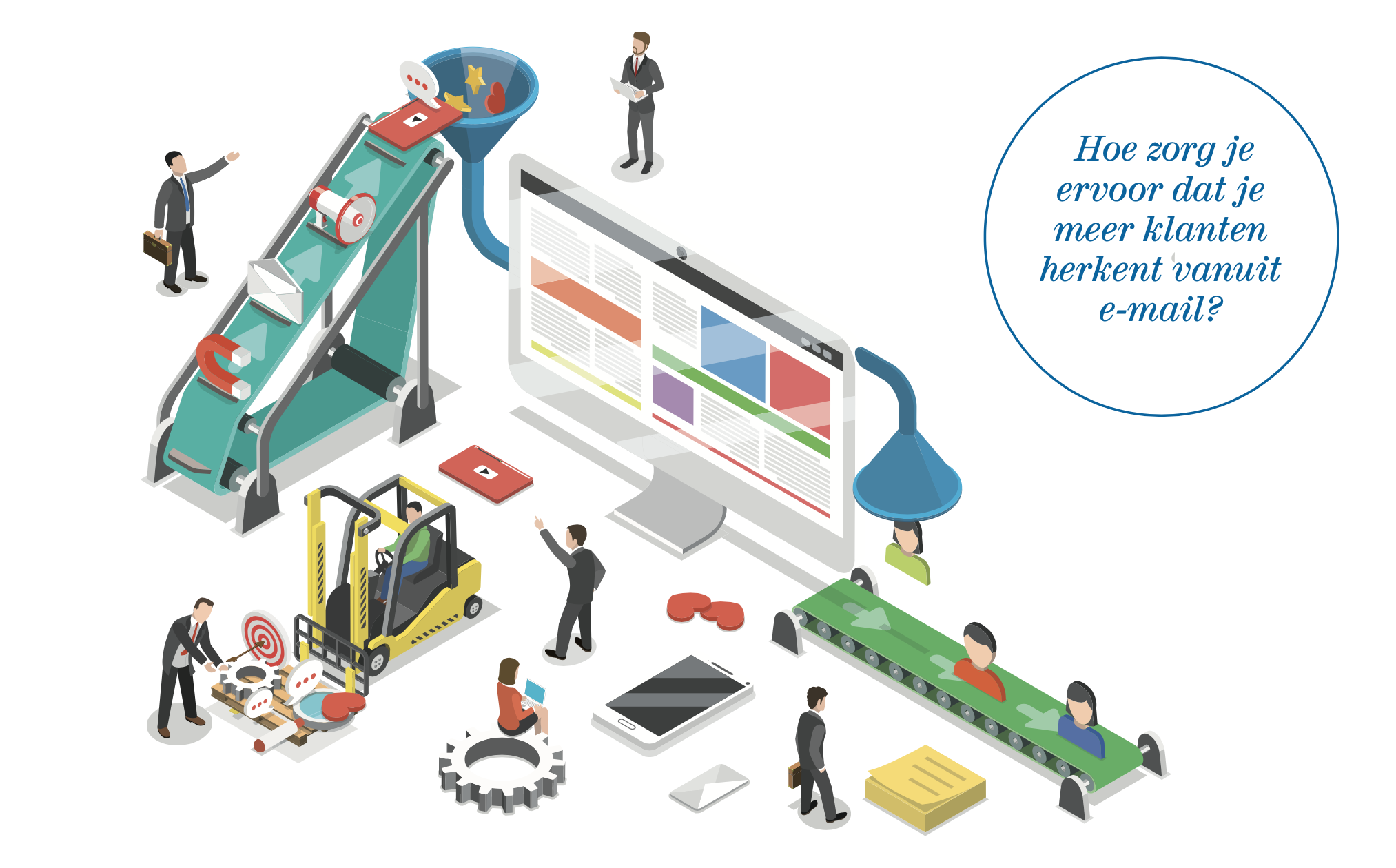E-mail marketing strategy: a five step approach to optimize online visits and revenue from e-mail marketing.
As one of the oldest forms of online marketing, e-mail marketing is still going strong as one of the most valuable sources of online traffic. Our clients get up to 45% of their online traffic via e-mail marketing. The goal of an e-mail marketing strategy is to maximize online visits from e-mail marketing.
If you can recognize those visitors and personalize the online experience, they become even more valuable. In this previous blogpost I described a new KPI: the number of recognized visitors on the website.
But how do you make sure you recognize more customers from email? Which e-mail marketing strategy has the best chance of success. To answer that question we visited several colleagues and customers. As it turns out, they all follow roughly the same five steps.
Step 1, Marketing infrastructure that fits the e-mail marketing strategy
The first step in your e-mail marketing strategy is defining a marketing architecture. In a good architecture there is a central destination where customer data comes together and where campaigns are managed.
Based on the marketing architecture you can provide customer recognition. For example by including an identification code in the links in an e-mail, the website or DMP can then use that identification code to retrieve customer data from the database.
Step 2, e-mail marketing team adoption
The second step in the e-mail marketing strategy is adoption of the software by the marketing team. To get people to click, you need to approach them regularly with a campaign or newsletter. We recommend a minimum of every two weeks.
However, this requires effort from the team, while capacity is often limited.
The solution is to share the workload: if colleagues in marketing, content, customer service and e-commerce can create their own content and campaigns, you will get more output and therefore more visitors.
If you are going to work with different people on campaigns, it is important to have a good system for managing contact pressure. With business ruling you can prevent your marketers from ‘spamming’ their customers. With Basedriver, we have automatically integrated contact pressure in the campaign planning.
In addition, the usability of the e-mail marketing software is crucial. If the software is too complicated and the knowledge about it is not widely available, then it is a lot more difficult to increase the output.
Step 3, enhanced e-mail marketing with customer journeys
When you have increased the output of the team, the next step in your e-mail marketing strategy is to follow-up on customer behaviour.
The more campaigns you send, the more data you build. How about a campaign for people who have clicked but did not buy? What to do when someone hasn’t read the mail for six months? What to do with a new lead who has requested a white paper?
Customer journeys are the answers to those questions. Building customer journeys you will approach your customers more often at relevant times.
You’ll increase the total output of campaigns and because of a high relevance you’ll also see higher and higher percentages of opens and clicks.
Step 4, Segmentation and targeting of subscribers
The first steps of the e-mail marketing strategy are aimed at increasing output. When you start approaching customers more often, the resulting website visits will increase immediately.
However, you cannot increase the number of e-mails indefinitely, you run the risk of generating unsubscribes. If you are at the limit of the desired contact pressure, additional profit can be gained by increasing the open ratio and click through rate (CTR).
The way to go from here is better segmentation and targeting, for example by analyzing which content is clicked and what the characteristics are of people who respond.
You can then send these people additional content with similar topics. You can also analyze which people who never click and send separate campaigns with completely different subjects especially for this group.
Our experience is that you can double open ratios and CTRs if you work structurally on writing the right content for the right target group, which in turn has a huge effect on the number of recognizable visitors to the site.
Step 5, Machine learning
The final step in our e-mail marketing strategy is deploying machine learning for email marketing. When you have completed the above steps, then automatically improving campaigns can give a next boost to the numbers.
An algorithm that ensures that email is sent at the right time, or that automatically recognizes what content people are interested in, for example, will automatically make your campaigns more relevant.
By following these five steps, you will become better at generating repeat visitors from your marketing database in a structured way.We have customers who generate up to 40% of their online traffic from email, at a cost of €0.0015 per visit!

infographic with the e-mail marketing strategy
Do you want more information about e-mail marketing strategy?
E-mail marketing is an essential part of the marketing mix for subscriptions. Basedriver is email marketing software specifically designed for this challenge. For example for automatically approaching unsubscribers, sending personal newsletters or automating campaigns. We make sure that you generate more visitors from e-mail marketing and that you can recognize those visitors on the website.
Would you like to know more about e-mail marketing with Basedriver? Please contact us for a personal demonstration.
This post is also available in:
 Nederlands (Dutch)
Nederlands (Dutch)








